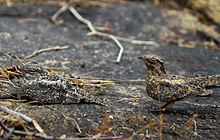
The fork-tailed palm swift or Neotropical palm swift is a species of bird in subfamily Apodinae of the swift family Apodidae. It is found across most of northern South America and on Trinidad and Tobago.
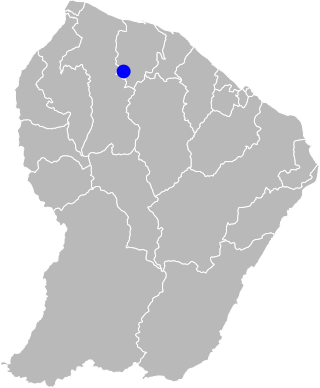
The Cayenne nightjar is a species of bird in the nightjar family only known from a single specimen, a male taken on the Fleuve Mana, French Guiana, in 1917. However, a possible female was caught at the Saül airstrip, French Guiana, in 1982.
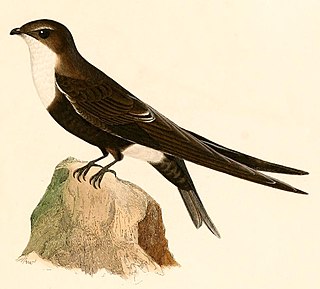
The white-tipped swift is a species of bird in subfamily Apodinae of the swift family Apodidae. It is found in Argentina, Bolivia, Brazil, Colombia, Ecuador, French Guiana, Peru, Suriname, Venezuela, and possibly Guyana.

The caatinga puffbird is a species of bird in the family Bucconidae, the puffbirds, nunlets, and nunbirds. It is endemic to Brazil.
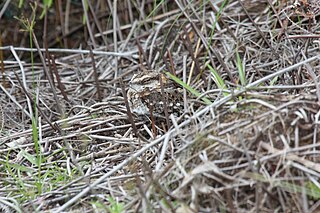
The white-tailed nightjar is a species of nightjar in the family Caprimulgidae. It is found in the tropic regions of Central and South America.

The Cuban nightjar, sometimes also Greater Antillean nightjar, is a species of nightjar in the family Caprimulgidae. It is endemic to Cuba.

The Hispaniolan nightjar is a nightjar species endemic to the Caribbean island of Hispaniola, which is shared by the Dominican Republic and Haiti.

The blackish nightjar is a species of bird in the family Caprimulgidae. It is found in Brazil, Bolivia, Colombia, Ecuador, French Guiana, Guyana, Peru, Suriname, and Venezuela.
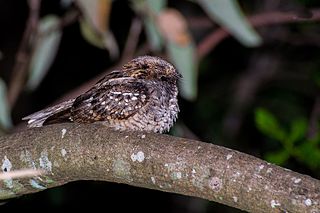
The little nightjar is a species of nightjar in the family Caprimulgidae. It is found in Argentina, Bolivia, Brazil, Paraguay, Peru, and Uruguay.

The tawny-collared nightjar is a species of nightjar in the family Caprimulgidae. It is endemic to Mexico.

The Roraiman nightjar is a species of nightjar in the family Caprimulgidae. It is found in Brazil, Guyana, and Venezuela.

The sand-colored nighthawk is a species of nightjar in the family Caprimulgidae. It is found in Bolivia, Brazil, Colombia, Ecuador, Peru, and Venezuela.

The sickle-winged nightjar is a species of nightjar in the family Caprimulgidae. It is found in Argentina, Brazil, Paraguay and possibly Uruguay.

The white-winged nightjar is a species of nightjar in the family Caprimulgidae. It is found in Bolivia, Brazil and Paraguay.

The long-trained nightjar is a species of nightjar in the family Caprimulgidae. It is found in Argentina and Brazil.

The white-eyed foliage-gleaner is a species of bird in the Furnariinae subfamily of the ovenbird family Furnariidae. It is found in Argentina, Brazil, and Paraguay.

The planalto woodcreeper is a sub-oscine passerine bird in subfamily Dendrocolaptinae of the ovenbird family Furnariidae. It is found in Argentina, Brazil, Paraguay, and Uruguay.
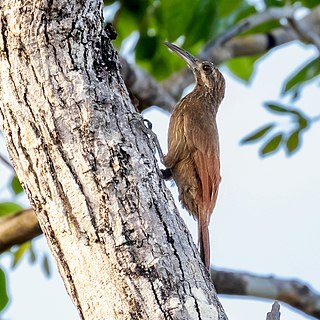
The moustached woodcreeper is a Vulnerable species of bird in the subfamily Dendrocolaptinae of the ovenbird family Furnariidae. It is endemic to Brazil.

The spotted piculet is a species of bird in subfamily Picumninae of the woodpecker family Picidae. It is endemic to Brazil.
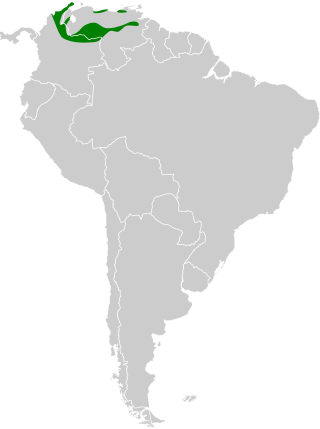
Todd's nightjar is a species of nightjar in the family Caprimulgidae. It is found in Brazil, Colombia, Guyana, and Venezuela.
